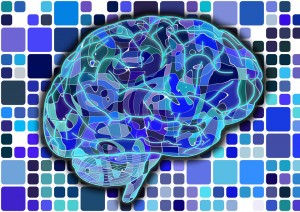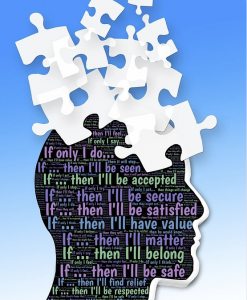“Nature has evolved the perfect virtual reality simulator. It’s called dreaming, and all it takes is consciousness to play. We are all born with this natural ability to dream when we sleep at night.” By guest blogger Ian A. Wilson
 httpspixabay.comennewborn-kid-newburn-dream-sleepy-1328454-CCO-Public-No-Attribution-Required.png
httpspixabay.comennewborn-kid-newburn-dream-sleepy-1328454-CCO-Public-No-Attribution-Required.png
It is my distinct pleasure to introduce to you a fellow dreamer who I have invited to be my guest blogger today. He has graciously accepted and sent me this wonderful, information-packed two-part article on Above and Beyond The Art of Dreaming. Ian A. Wilson is a dream expert who I recently met on Twitter and have been sharing dreams and comments ever since. And now I am pleased to share with you Ian A. Wilson and his amazing dreams and secrets about Lucid Dreaming. Please enjoy part one of this article and watch for part two of Above and Beyond The Art of Dreaming.
Sleep research shows we can have as many as 5-6 dreams per night.
However, many people do not remember even one dream. This is largely due to not having an interest in or developing the necessary skills to participate in this already on-going process of dreaming.
For 31 years, I have practiced a dream technique known as Lucid Dreaming.
Lucid Dreaming is when you become self-aware and conscious during a dream. Most often, people do not experience consciousness during sleep and become entranced into an altered state of consciousness where self-realization and awareness are greatly diminished and are in a state of immersion during a dream unaware they are dreaming at all until the point they wake up.
There is an art to dreaming where this nightly experience can become a source of new experiences and wonderful adventure. After all, they are your dreams and dreaming is simply a more advanced form of thinking between the waking and subconscious mind. When you close your eyes and begin to fall asleep, think of the blank space you see as the canvas and your thoughts as the paint of the dream world.
Another useful metaphor is that thoughts are the programming language of dreams, and the subconscious mind is the computer. As you learn how your dreams work, you can program the types of dreams you want to experience. If you don’t then you are left at the mercy of more random unconscious thoughts and experiences which may not be as fun or interesting as the ones you can create when you get out of the passenger’s seat of the unconscious mind and into the driver’s seat of your dream creation.
Many years ago I wrote an article that covered a different approach to dream programming introducing a technique called Genre Specific Lucid Dreaming, and in the world of dream acronyms that would be GSLD. What brought me into the art of dreaming stemmed from my childhood when I loved movies and cartoons. I had this fantasy as a child where I wanted to project myself into the TV set and be in some of those shows. Certainly, a silly premise but I started noticing that my dreams began to reflect that fantasy and I would suddenly be in a movie like Star Wars and this wish through dreaming was fulfilled.
 ascension-1568162__180-Jan-Baby-Pixabay-FREE-No-Attribution-Required.jpg
ascension-1568162__180-Jan-Baby-Pixabay-FREE-No-Attribution-Required.jpg
Even though I wasn’t lucid in these dreams, it was the spark that fueled my passion for dreams in general. The breakthrough came in the form of an article published in an Omni magazine in 1987 written by legendary dream researcher Dr. Stephen LaBerge entitled, “Power Trips: Controlling Your Dreams.” In this article, Stephen described that some people could be awake and conscious in their dreams and could control the dream content.
After reading the article at the age of 15, I was overwhelmed by the excitement and curiosity that this inspired. The idea of being conscious in one of this fun fantasy dreams was too good to be true, except I never had a lucid dream and didn’t know what it was like or how it would feel. Just the raw desire to have the experience triggered my first lucid dream which can only be described as the most amazing experience I had at that time.
Lucid dreaming was so real, and vivid; it was just like being in another reality.
Being conscious made the dream more vibrant, easier to remember and best of all, I could control the dream and flew for the first time fully aware that I was in this magical world of dreams.
31 years later, I’ve never looked back and have lucid dreamed nearly every day since. Using intent to pre-program my desired dream experiences I have re-created movies I enjoy, video games, cartoons, books and many of my alternative worlds simply by engaging this ability to dream with the intention to dream how I want, what I want for fun night-time adventures. Learning to lucid dream has in every respect, given me a second life to enjoy while the body sleeps.
The secret was in realizing that dreams are highly-organized products of sensory-thinking.
 brain-951845_960_720-Geralt-Pixabay-FREE-No-Attribution-Required.jpg
brain-951845_960_720-Geralt-Pixabay-FREE-No-Attribution-Required.jpg
Through observing how dreams formed during the process of falling asleep, it was clear that a type of inversion of the senses was taking place where the mind starts to think in sensory forms. As dreams have visual, audible and tactile feedback, the emergence of this form of thought occurred during the onset of dreaming through a pre-dream state known as hypnagogia.
It became self-evident that visual, audible and tactile thinking was part of the dreaming package.
During the hypnagogic stage, I would think in the context of the desired dream experience shaping the hypnagogic patterns into something desired. The result was anything limited by imagination alone. Nature’s perfected virtual reality system known as dreaming opened up the floodgates of adventure and new experiences which rivaled even modern day computer games and graphics.
Learning to think in this higher-order language of dreams wasn’t at all difficult rather it was a natural part of this shift to altered-states of consciousness. The challenge was in only realizing that dreams were entirely composed of this sensory language and then developing the attention and focus needed to shape those thoughts into the desired experience.
The other challenge was learning to allow me to remain conscious during this process, setting aside all worries, anxieties, and concerns that would otherwise influence the thoughts shaping the dream experience. There is never a need to drag in fear, beliefs and other psychological, emotional traits and project those into the emerging dream content. My process was to recognize those influences, let them go and focus on what I wanted to experience keeping that focus while the dream emerged.
Dream programming is easy; when my daughter was very young, I started to teach her how to dream what she wanted using this simple process. In the morning she would tell me wonderful fun dreams that were influenced by cartoons she enjoyed at that time.
One dream that made me laugh was a Barbie dance party dream she had.
Recently, she had a dream at a concert which had a seafood buffet and told me the food in the dream tasted amazing. I enjoy fine dining in dreams and always boast to her how amazing dream food can taste. In many cases, it’s better than waking life. Which is a bit disappointing when you wake up with a craving for something you will never find here, but that’s part of the magic.
I described dreaming to her as a form of entertainment no different than watching a movie or playing a video game except in dreams you can take control and create the kind of movie or game you want to experience. She’s still learning, but I’m sure more fine dining and fun adventures along the way will encourage healthy fun dreams.
The other benefit to learning to dream is overcoming nightmares and fears.
Once you realize dreams can never hurt you, only invoke fears; it’s easy to face them. You can change the dream, and resolve those fears once and for all. For me, dreams have genres, so a nightmare dream is no different than watching a horror movie. I don’t get attached to the fears rather always in a state of awe at the artistic detail of the dream narrative.
This playground of the mind is living breathing art, and that is how I treat dreaming.
So what’s the secret? How do you get started? It’s not hard to do. Join me as we discuss this and more in part 2 of The Art of Dreaming.
Feel free to visit my website and read through many of the lucid dreams that I have had over the years. My busy career doesn’t allow me to write down and blog every dream that I have however when something really fun arises I try to record them.
If you liked this article, please share it with friends and family who may be interested in dreams.
Guest Author Bio:
Ian Wilson has been a lucid dream explorer since 1987 and has enjoyed lucid dreaming nearly every night for 31 years. He has written several free articles on dreams since 1998 from, “A Course on Consciousness,” an ebook entitled, “You Are Dreaming,” an abstract entitled, “The Theory of Precognitive Dreams” and many more. He believes in open-source dreaming making dream related material freely accessible to those interested in advancing themselves in the Art of Dreaming. Website- http://www.youaredreaming.org/
 About the Author: Kathleen (Kat) O’Keefe-Kanavos is a VIDEO Podcaster, a three-time Breast Cancer Survivor, seen on Dr. Oz, DOCTORS, NBC, & CBS. Her Divine Dreams diagnosed her illness. Kat was a Research Participant for Duke University’s Dr. Larry Burk‘s Breast Cancer Dream Research Program. They co-wrote, Dreams That Can Save Your Life. She is a Syndicated Columnist, TV Producer/Host and award-winning Author/Lecturer who promotes patient advocacy and connecting with Divine Spiritual-guidance through Dreams. “Don’t tell God how big your problems are. Tell your problems how big your God is.” Learn more @ www.KathleenOKeefeKanavos.com
About the Author: Kathleen (Kat) O’Keefe-Kanavos is a VIDEO Podcaster, a three-time Breast Cancer Survivor, seen on Dr. Oz, DOCTORS, NBC, & CBS. Her Divine Dreams diagnosed her illness. Kat was a Research Participant for Duke University’s Dr. Larry Burk‘s Breast Cancer Dream Research Program. They co-wrote, Dreams That Can Save Your Life. She is a Syndicated Columnist, TV Producer/Host and award-winning Author/Lecturer who promotes patient advocacy and connecting with Divine Spiritual-guidance through Dreams. “Don’t tell God how big your problems are. Tell your problems how big your God is.” Learn more @ www.KathleenOKeefeKanavos.com
Photo Credit:
httpspixabay.comennewborn-kid-newburn-dream-sleepy-1328454-CCO-Public-No-Attribution-Required.png
httpspixabay.comenbeautiful-nature-sunset-fantasy-3325372Tweetyspics-FREE-for-commercial-use-No-attribution-required.jpg
ascension-1568162__180-Jan-Baby-Pixabay-FREE-No-Attribution-Required.jpg
brain-951845_960_720-Geralt-Pixabay-FREE-No-Attribution-Required.jpg
httpspixabay.comenconditionality-insecurity-fear-889217-johnhain-CCO-Public-No-Attribution-Required.png

 httpspixabay.comenbeautiful-nature-sunset-fantasy-3325372Tweetyspics-FREE-for-commercial-use-No-attribution-required.jpg
httpspixabay.comenbeautiful-nature-sunset-fantasy-3325372Tweetyspics-FREE-for-commercial-use-No-attribution-required.jpg httpspixabay.comenconditionality-insecurity-fear-889217-johnhain-CCO-Public-No-Attribution-Required.png
httpspixabay.comenconditionality-insecurity-fear-889217-johnhain-CCO-Public-No-Attribution-Required.png









